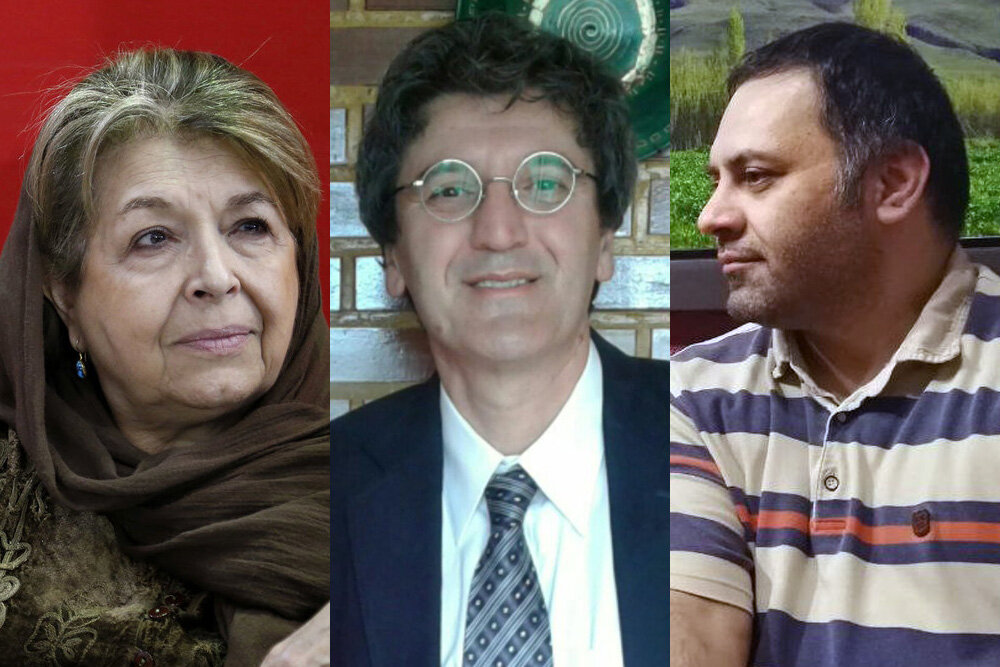Prominent translators comment on future of translation

TEHRAN-In the interview with the celebrated translators, conducted on the occasion of the International Translation Day celebrated annually on September 30, Tehran Times also asked Lili Golestan, Reza Alizadeh, and Mahmoud Goudarzi about the reason why there are fewer Persian novels and stories translated into other languages than translations of foreign works into Persian.
Part 2
“Translating Persian texts into other languages is not an easy task. But in my opinion, it can be done with the help of a caring government, which unfortunately does not usually happen,” Golestan said.
“I find it difficult as an author to bring foreign translators and publishers on board. I have to sit down and write my own book. I've said multiple times that governments should create the necessary conditions, which they usually don't. Otherwise, our great authors such as Ahmad Shamlou, Mahmoud Dowlatabadi, and Ahmad Mahmoud are as good as foreign writers like Orhan Pamuk or Naguib Mahfouz, and are even greater,” she asserted.
Alizadeh believes that this work can be better done by foreign translators. “I doubt that Iranians who learn English as a second language can translate Persian literary works into a foreign language like English as well as a native English translator,” he said.
“Our translators are very good at rendering foreign works to their native language and also, they can translate other Persian texts such as news or humanities into another language but translating literature is something different and more difficult,” he stressed.
However, Goudarzi has another idea. “I guess it's mostly because of the quality of the Persian novels. And also, I think some of the good ones are not written for all cultures, or at least they're not well understood by other cultures,” he stressed.
“Another reason could be the scarcity of Persian-English translators or publishing houses which would risk to introduce unknown authors,” he added.
AI: threat or help?
Finally, the Tehran Times asked the translation experts to share their ideas about the future of translation and translators in light of the emergence and development of artificial intelligence.
Expressing her frustration about the issue, Golestan said: “In my opinion, it's terrifying. These robots, these NFTs, and this artificial intelligence are frightening to me. They're erasing and eliminating humans. I can't digest them at all”.
However, Alizadeh and Goudarzi were more dubious about the issue. “I really have no information in this field. But I know that language is the most complicated part of human so I don’t know to what extent the AI can replace humans,” Alizadeh said.
“The fact is that one sentence can be translated into another language in various forms and structures but there will be slight differences in meaning, since changing words and their order will lead to a change in the emphasis and message of the sentence. The AI should know all these details and make the best choice to provide a correct and accurate translation,” he asserted.
Likewise, Goudarzi believes that machines may be accurate and efficient, but they are not creative and this is while creativity is an important part of this job.
“AI may even help translators do their job better, just like software used for editing texts. But I don't think AI can replace human translators,” he concluded.
The emergence of artificial intelligence in translation has the potential to streamline and expedite the translation process.
Considering what the notable figures have underlined about AI, it can be concluded that AI has the potential to streamline and expedite the translation process and assist translators in various ways such as aiding in terminology consistency. However, the nuanced understanding of context, culture, and creativity that human translators bring is challenging for AI to replicate fully.
Translators will likely continue to play a crucial role in complex and culturally sensitive translations. AI can be a valuable tool, but it won't replace the need for human translators, especially in literature and other creative fields where nuance and cultural context are paramount. The future may involve a collaborative effort between humans and AI to achieve the best results in translation.
SS/SAB
